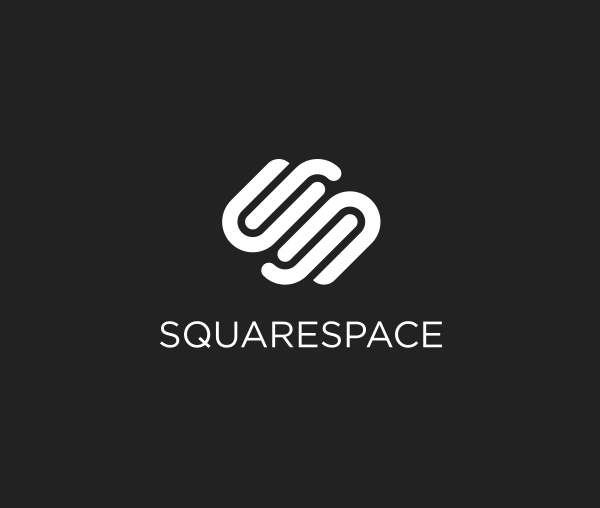DJI - Mavic Air vs Mavic Pro and 7 Reason why the DJI Mavic Air might be better for you
/https://www.youtube.com/watch?v=mgXVP09xK-gDJI Summer Sale - ENDS TODAY JULY 17thWe are often asked for recommendations on drones. DJI continues to dominate the market with excellent drones that offer great quality and are really easy to fly. In this video, I share seven reasons that you may want the smaller, more portable Mavic Air over the still portable but noticeably larger, Mavic Pro.
7 Reasons to get the Mavic Air instead of the Mavic Pro
Portability - Mavic air takes it to another level in portability
The Mavic air folds down to a ridiculously small size. The controller features removable sticks and the batteries are significantly smaller. All of that adds up to a drone that takes up noticeably less space in your bag but still gives you the same image and video quality.
Image and video quality is a little better in the Mavic air and Air offers better slow-mo features at 120fps vs 96 in the
The smaller Mavic Air has a slightly better processor - in my tests most photos and video looked identical with some Air shots looking just a tiny bit better. And in video mode the Mavic Air offers 120fps slow-mo vs just 96fps offered by the Mavic Pro.
Cost - Mavic Air is cheaper especially when you add up extras
With today's sale this isn't true but usually, the Mavic Air is cheaper and the batteries are cheaper, accessories are cheaper - it's starting to add up to some significant savings.
Additional Quick shot modes
Some of these are a bit of a gimmick but they do make it easy, and fun to create quick snapshots of your surroundings. Check out this recent Asteroid Quick shot mode from Nevada https://www.instagram.com/p/BjSrhJOHLUd/?taken-by=photorectoby
Rear obstacle avoidance
You should always be aware of your drone and its surroundings but there are times when maybe you think you know how close you are to that bush or tree and it turns out much closer than you thought. The Mavic Pro only has forward sensing obstacle avoidance and the Air provides sensors on the front AND THE REAR! This means you are less likely to crash it when flying backward.
Works without a controller
The Mavic Air is capable of take off, photo and video capture and landing all with gestures. No controller needed, not even your phone needed. It is impressive when you want to travel VERY light and just get some quick shots of you in a location.
Built-in memory
The Mavic Air is the only DJI Drone to include 8GB of onboard memory - this is a great fail safe if you end up leaving the house without a microSD card.
4 reasons to get the Mavic Pro
Occusyn technology for control and video transmission
This means you get cleaner video feed at 1080 vs just 720 from the air - and it supports longer distances. In some European countries, the wifi connectivity of the Mavic air may be more limited.
Longer flight time
The Mavic Pro is capable of 23 minutes. The Mavic Air tops out at 18 minutes. I find that I often get the shots I need within 16 minutes and land the drone with 30% battery to be safe. Using that math I would be a little more rushed with the Mavic Air to get the necessary shots.
More maneuverable gimbal - flying forward you can keep the gimbal pointed up higher than you can on the Mavic air
This is one of the biggest differences - when flying forward at normal speeds (not slow) the tilt of the Mavic Air gimbal is NOT sufficient to keep a level shot - you end up shooting downward. The Mavic Pro gimbal tilt has a larger range and allows you to keep the horizon in the shot when flying forward.
Mavic pro is a bit quieter - really it is a deeper pitch which sounds quieter.
The actual decibel difference is very small but the deeper hum sound from the Mavic Pro blends in with the background better. Important if you don't want to annoy your neighbors.DJI Summer Sale - ENDS TODAY JULY 17thWhich drone would/did you pick and why?


 You trade off some features for the smaller size of the Spark. While the Mavic is capable of 24 minutes flight time, closer to 30 with the new Platinum. The Spark offers just 16 minutes in ideal conditions and in flying both of these - I am almost always done with getting the shots I need with the Mavic and have plenty of battery left. With the Spark, it feels fairly urgent to get the shots I need in that shorter timeframe. The Mavic is faster and while you can switch the Spark into sports mode I have struggled to get very cinematic looking shots when it that mode, the Mavic in normal mode is fast enough and remains smoothly controllable. You also sacrifice range - the Mavic can be flown nearly 4 miles away, the Spark just over a mile when using the controllers for each- honestly here in the United States, you need to keep them both in sight at all times so the difference doesn’t bother me much. And it’s important to mention that the spark at $500 does not come with a controller - you control with the DJI app on your phone - that range is much more limited, just 100 meters and while the Mavic is capable of this too it’s really not something I recommend. The lack of tactile feedback and trying to keep your eyes on the drone plus the screen that your fingers are partially obscuring just make it awkward.
You trade off some features for the smaller size of the Spark. While the Mavic is capable of 24 minutes flight time, closer to 30 with the new Platinum. The Spark offers just 16 minutes in ideal conditions and in flying both of these - I am almost always done with getting the shots I need with the Mavic and have plenty of battery left. With the Spark, it feels fairly urgent to get the shots I need in that shorter timeframe. The Mavic is faster and while you can switch the Spark into sports mode I have struggled to get very cinematic looking shots when it that mode, the Mavic in normal mode is fast enough and remains smoothly controllable. You also sacrifice range - the Mavic can be flown nearly 4 miles away, the Spark just over a mile when using the controllers for each- honestly here in the United States, you need to keep them both in sight at all times so the difference doesn’t bother me much. And it’s important to mention that the spark at $500 does not come with a controller - you control with the DJI app on your phone - that range is much more limited, just 100 meters and while the Mavic is capable of this too it’s really not something I recommend. The lack of tactile feedback and trying to keep your eyes on the drone plus the screen that your fingers are partially obscuring just make it awkward. Difference in the external controllers too with the Mavic providing an LCD screen with some basic info (though everything important is also displayed through the app so you don’t really miss out on info but I find it nice to have my altitude and distance in a dedicated spot), you also have a 5 way configurable stick that is replaced by a simple button on the Spark controller and a few additional customizable buttons on the Mavic controller.
Difference in the external controllers too with the Mavic providing an LCD screen with some basic info (though everything important is also displayed through the app so you don’t really miss out on info but I find it nice to have my altitude and distance in a dedicated spot), you also have a 5 way configurable stick that is replaced by a simple button on the Spark controller and a few additional customizable buttons on the Mavic controller. But of course the Spark can be flown without any controller at all via gesture mode and not something available on the Mavic - it feels a bit gimmicky and at times I struggled to get it to do much other than take off and land on my palm but when it works it is fun to use and certainly impresses your friends.
But of course the Spark can be flown without any controller at all via gesture mode and not something available on the Mavic - it feels a bit gimmicky and at times I struggled to get it to do much other than take off and land on my palm but when it works it is fun to use and certainly impresses your friends. Both cameras share the same sensor though the mavic is capable of shooting RAW stills that gives you more editing capabilities, offers a slightly wider fixed aperture f/2.2 vs f/2.6 in the spark and, shooting 4k video with 3 axis gimbal support vs just 1080 and 2 axis gimbal in the Spark at a lower bit rate. I my testing I certainly see an advantage with the Mavic in stills and video quality, especially in lower light. The spark isn’t bad - it just feels a touch behind what the Mavic provides in quality. I haven’t really noticed a difference between the 2 axis and 3 axis gimbals - the spark video looks just as stable smooth.
Both cameras share the same sensor though the mavic is capable of shooting RAW stills that gives you more editing capabilities, offers a slightly wider fixed aperture f/2.2 vs f/2.6 in the spark and, shooting 4k video with 3 axis gimbal support vs just 1080 and 2 axis gimbal in the Spark at a lower bit rate. I my testing I certainly see an advantage with the Mavic in stills and video quality, especially in lower light. The spark isn’t bad - it just feels a touch behind what the Mavic provides in quality. I haven’t really noticed a difference between the 2 axis and 3 axis gimbals - the spark video looks just as stable smooth. You do see a noticeable difference in control options for both photos and video in the app - Not only does the Mavic provide the RAW shooting you have color profiles for video and you can customize the speed of the gimbal for very controlled, cinematic looking shots - not possible on the Spark.
You do see a noticeable difference in control options for both photos and video in the app - Not only does the Mavic provide the RAW shooting you have color profiles for video and you can customize the speed of the gimbal for very controlled, cinematic looking shots - not possible on the Spark. The Spark is cheaper, lighter, smaller and in some ways more fun to fly but does not provide 4k and its image quality/video quality is decent but not quite as good as the Mavic.The Mavic costs more but offers image and video quality that I love using in my travel videos along with the extended flight time and faster speed while remaining cinematic and still being portable enough to bring along just about everywhere.I think the Spark makes a great first drone but the Mavic has those additional advantages that make it worthwhile for the serious content creators that need to travel.I recommend the Fly More Combo for both drones - the extra batteries are useful and having the multi-charger for both drones makes a big difference in how quickly you can get flying again. I recommend buying from B&H Photo - no sales tax outside of NY state.
The Spark is cheaper, lighter, smaller and in some ways more fun to fly but does not provide 4k and its image quality/video quality is decent but not quite as good as the Mavic.The Mavic costs more but offers image and video quality that I love using in my travel videos along with the extended flight time and faster speed while remaining cinematic and still being portable enough to bring along just about everywhere.I think the Spark makes a great first drone but the Mavic has those additional advantages that make it worthwhile for the serious content creators that need to travel.I recommend the Fly More Combo for both drones - the extra batteries are useful and having the multi-charger for both drones makes a big difference in how quickly you can get flying again. I recommend buying from B&H Photo - no sales tax outside of NY state.



 Shop all the DJI Spark colors at B&H Photo
Shop all the DJI Spark colors at B&H Photo No word on the increased flight time being a result of updated batteries or updated electronics in the Platinum Pro.
No word on the increased flight time being a result of updated batteries or updated electronics in the Platinum Pro.
 Cool Feature - using just touch and hand signals the drone can take off from your hand, rotate around you, follow you, snap selfies or group shots and perform a few other prescribed routes while tracking you. Range of course is limited with gestures and even with the app you are limited to less than 100 meters distance.
Cool Feature - using just touch and hand signals the drone can take off from your hand, rotate around you, follow you, snap selfies or group shots and perform a few other prescribed routes while tracking you. Range of course is limited with gestures and even with the app you are limited to less than 100 meters distance. 

 While it can produce professional results the lack of 4k, 16 minute flight time and probable issues in wind make this less ideal for serious aerial photo or video needs. Those that desire a more versatile drone need to consider the Mavic Pro or a higher model.$499 will get you the drone and one battery. You can charge the drone via Micro USB(a first for DJI). Control with hand gestures or the DJI app on your smartphone - range is limited to approximately 100 meters.$699 for the Fly more combo which includes - extra props, prop guards, 1 extra battery (2 total), a remote and a carry case. The remote extends the range to 1.24 miles and while the remote is similar to the DJI Mavic it is much simpler without the LCD Screen.Shipping June 21st - Preorder from
While it can produce professional results the lack of 4k, 16 minute flight time and probable issues in wind make this less ideal for serious aerial photo or video needs. Those that desire a more versatile drone need to consider the Mavic Pro or a higher model.$499 will get you the drone and one battery. You can charge the drone via Micro USB(a first for DJI). Control with hand gestures or the DJI app on your smartphone - range is limited to approximately 100 meters.$699 for the Fly more combo which includes - extra props, prop guards, 1 extra battery (2 total), a remote and a carry case. The remote extends the range to 1.24 miles and while the remote is similar to the DJI Mavic it is much simpler without the LCD Screen.Shipping June 21st - Preorder from 
 [/vc_column][vc_column width="1/4"]
[/vc_column][vc_column width="1/4"] [/vc_column][/vc_row][vc_row][vc_column width="1/4"]Size[/vc_column][vc_column width="1/4"]335mm (Extended) 83mm x 83mm x 198mm (Folded)[/vc_column][vc_column width="1/4"]350mm[/vc_column][vc_column width="1/4"]143×143×55 mm[/vc_column][/vc_row][vc_row][vc_column width="1/4"]Weight[/vc_column][vc_column width="1/4"]1.64 lbs (743g)[/vc_column][vc_column width="1/4"]3.04 lbs (1380g)[/vc_column][vc_column width="1/4"].66lbs (300 g)[/vc_column][/vc_row][vc_row][vc_column width="1/4"]Operating Temp[/vc_column][vc_column width="1/4"]32° to 104° F ( 0° to 40° C )[/vc_column][vc_column width="1/4"] 32° to 104°F (0° to 40°C)[/vc_column][vc_column width="1/4"]32° to 104° F (0° to 40° C)[/vc_column][/vc_row][vc_row][vc_column width="1/4"]Max Ascent /Descent Speed[/vc_column][vc_column width="1/4"]16.4 ft/s | 9.8 ft/s[/vc_column][vc_column width="1/4"]19.7 ft/s | 13.1 ft/s[/vc_column][vc_column width="1/4"] 9.8 ft/s (3 m/s) | 9.8 ft/s (3 m/s)[/vc_column][/vc_row][vc_row][vc_column width="1/4"]Max Flight Time[/vc_column][vc_column width="1/4"]27 Minutes[/vc_column][vc_column width="1/4"]28 Minutes[/vc_column][vc_column width="1/4"]16 Minutes[/vc_column][/vc_row][vc_row][vc_column width="1/4"]Max Flight Distance[/vc_column][vc_column width="1/4"]8 mi (13 km)[/vc_column][vc_column width="1/4"]-[/vc_column][vc_column width="1/4"]-[/vc_column][/vc_row][vc_row][vc_column width="1/4"]Max Tilt Angle[/vc_column][vc_column width="1/4"]-[/vc_column][vc_column width="1/4"]S-mode: 42°A-mode: 35°P-mode: 15°[/vc_column][vc_column width="1/4"]-[/vc_column][/vc_row][vc_row][vc_column width="1/4"]Max Angular Speed[/vc_column][vc_column width="1/4"]-[/vc_column][vc_column width="1/4"]S-mode: 200°/sA-mode: 150°/s[/vc_column][vc_column width="1/4"]-[/vc_column][/vc_row][vc_row][vc_column width="1/4"]Max Wind Speed Resistance[/vc_column][vc_column width="1/4"]-[/vc_column][vc_column width="1/4"]10 m/s[/vc_column][vc_column width="1/4"]-[/vc_column][/vc_row][vc_row][vc_column width="1/4"]Sensor[/vc_column][vc_column width="1/4"]1/2.3” (CMOS), Effective pixels:12.35 MP[/vc_column][vc_column width="1/4"]1/2.3” CMOS, Effective pixels:12.4 MP[/vc_column][vc_column width="1/4"]1/2.3" CMOSEffective pixels: 12 MP[/vc_column][/vc_row][vc_row][vc_column width="1/4"]Lens[/vc_column][vc_column width="1/4"]FOV 78.8° 28 mm (35 mm format equivalent) f/2.2Distortion < 1.5% Focus from 0.5 m to ∞[/vc_column][vc_column width="1/4"]FOV 94° 20 mm (35 mm format equivalent) f/2.8 focus at ∞[/vc_column][vc_column width="1/4"]FOV 81.9° 25 mm (35 mm format equivalent) f/2.6(shooting range: 2 m to ∞)[/vc_column][/vc_row][vc_row][vc_column width="1/4"]Gimbal[/vc_column][vc_column width="1/4"]3-Axis[/vc_column][vc_column width="1/4"]3-Axis[/vc_column][vc_column width="1/4"]2-Axis[/vc_column][/vc_row][vc_row][vc_column width="1/4"]ISO Range[/vc_column][vc_column width="1/4"]100-3200 (video)100-1600 (photo)[/vc_column][vc_column width="1/4"]100-3200 (video)100-1600 (photo)[/vc_column][vc_column width="1/4"]Video: 100-3200Photo: 100-1600[/vc_column][/vc_row][vc_row][vc_column width="1/4"]Shutter Speed[/vc_column][vc_column width="1/4"]8s -1/8000s[/vc_column][vc_column width="1/4"]8 - 1/8000 s[/vc_column][vc_column width="1/4"]2-1/8000 s[/vc_column][/vc_row][vc_row][vc_column width="1/4"]Image Size[/vc_column][vc_column width="1/4"]4000×3000[/vc_column][vc_column width="1/4"]4000×3000[/vc_column][vc_column width="1/4"]3968×2976[/vc_column][/vc_row][vc_row][vc_column width="1/4"]Still Photography Modes[/vc_column][vc_column width="1/4"]Single shotBurst shooting: 3/5/7 framesAuto Exposure Bracketing (AEB): 3/5 bracketed frames at 0.7 EV BiasInterval[/vc_column][vc_column width="1/4"]Single shotBurst shooting: 3/5/7 framesAuto Exposure Bracketing (AEB): 3/5 bracketed frames at 0.7 EV BiasTimelapseHDR[/vc_column][vc_column width="1/4"]Single ShotBurst Shooting: 3 framesAuto Exposure Bracketing (AEB): 3 bracketed frames at 0.7 EV biasInterval: 2/3/5/7/10/15/20/30/60 s[/vc_column][/vc_row][vc_row][vc_column width="1/4"]Video Recording Modes[/vc_column][vc_column width="1/4"]C4K: 4096×2160 24p4K: 3840×2160 24/25/30p2.7K: 2720x1530 24/25/30pFHD: 1920×1080 24/25/30/48/50/60/96pHD: 1280×720 24/25/30/48/50/60/120p[/vc_column][vc_column width="1/4"]UHD: 4096×2160 (4K) 24 / 25p3840×2160 (4K) 24 / 25 / 30p2704×1520 (2.7K) 24 / 25 / 30pFHD: 1920×1080 24 / 25 / 30 / 48 / 50 / 60 / 120pHD: 1280×720 24 / 25 / 30 / 48 / 50 / 60p[/vc_column][vc_column width="1/4"]-[/vc_column][/vc_row][vc_row][vc_column width="1/4"]Max Video Bitrate[/vc_column][vc_column width="1/4"] 60 Mbps[/vc_column][vc_column width="1/4"] 60 Mbps[/vc_column][vc_column width="1/4"]24 Mbps[/vc_column][/vc_row][vc_row][vc_column width="1/4"]Supported File Systems[/vc_column][vc_column width="1/4"]FAT32 ( ≤ 32 GB ); exFAT ( > 32 GB )[/vc_column][vc_column width="1/4"]FAT32 ( ≤ 32 GB ); exFAT ( > 32 GB )[/vc_column][vc_column width="1/4"]FAT32 (≤ 32 GB)[/vc_column][/vc_row][vc_row][vc_column width="1/4"]Photo[/vc_column][vc_column width="1/4"]JPEG, DNG[/vc_column][vc_column width="1/4"]JPEG, DNG[/vc_column][vc_column width="1/4"]JPEG[/vc_column][/vc_row][vc_row][vc_column width="1/4"]Video[/vc_column][vc_column width="1/4"]MP4, MOV (MPEG-4 AVC/H.264)[/vc_column][vc_column width="1/4"] MP4, MOV (MPEG-4 AVC/H.264)[/vc_column][vc_column width="1/4"]MP4 (MPEG-4 AVC/H.264)[/vc_column][/vc_row][vc_row][vc_column width="1/4"]Supported SD Cards[/vc_column][vc_column width="1/4"] Micro SDMax capacity: 64 GB. Class 10 or UHS-1 rating required[/vc_column][vc_column width="1/4"]Micro SDMax capacity: 64 GBClass 10 or UHS-1 rating required[/vc_column][vc_column width="1/4"]Micro SDMax capacity: 64 GBClass 10 or UHS-1 rating required[/vc_column][/vc_row][vc_row][vc_column width="1/4"]Buy it Today![/vc_column][vc_column width="1/4"]
[/vc_column][/vc_row][vc_row][vc_column width="1/4"]Size[/vc_column][vc_column width="1/4"]335mm (Extended) 83mm x 83mm x 198mm (Folded)[/vc_column][vc_column width="1/4"]350mm[/vc_column][vc_column width="1/4"]143×143×55 mm[/vc_column][/vc_row][vc_row][vc_column width="1/4"]Weight[/vc_column][vc_column width="1/4"]1.64 lbs (743g)[/vc_column][vc_column width="1/4"]3.04 lbs (1380g)[/vc_column][vc_column width="1/4"].66lbs (300 g)[/vc_column][/vc_row][vc_row][vc_column width="1/4"]Operating Temp[/vc_column][vc_column width="1/4"]32° to 104° F ( 0° to 40° C )[/vc_column][vc_column width="1/4"] 32° to 104°F (0° to 40°C)[/vc_column][vc_column width="1/4"]32° to 104° F (0° to 40° C)[/vc_column][/vc_row][vc_row][vc_column width="1/4"]Max Ascent /Descent Speed[/vc_column][vc_column width="1/4"]16.4 ft/s | 9.8 ft/s[/vc_column][vc_column width="1/4"]19.7 ft/s | 13.1 ft/s[/vc_column][vc_column width="1/4"] 9.8 ft/s (3 m/s) | 9.8 ft/s (3 m/s)[/vc_column][/vc_row][vc_row][vc_column width="1/4"]Max Flight Time[/vc_column][vc_column width="1/4"]27 Minutes[/vc_column][vc_column width="1/4"]28 Minutes[/vc_column][vc_column width="1/4"]16 Minutes[/vc_column][/vc_row][vc_row][vc_column width="1/4"]Max Flight Distance[/vc_column][vc_column width="1/4"]8 mi (13 km)[/vc_column][vc_column width="1/4"]-[/vc_column][vc_column width="1/4"]-[/vc_column][/vc_row][vc_row][vc_column width="1/4"]Max Tilt Angle[/vc_column][vc_column width="1/4"]-[/vc_column][vc_column width="1/4"]S-mode: 42°A-mode: 35°P-mode: 15°[/vc_column][vc_column width="1/4"]-[/vc_column][/vc_row][vc_row][vc_column width="1/4"]Max Angular Speed[/vc_column][vc_column width="1/4"]-[/vc_column][vc_column width="1/4"]S-mode: 200°/sA-mode: 150°/s[/vc_column][vc_column width="1/4"]-[/vc_column][/vc_row][vc_row][vc_column width="1/4"]Max Wind Speed Resistance[/vc_column][vc_column width="1/4"]-[/vc_column][vc_column width="1/4"]10 m/s[/vc_column][vc_column width="1/4"]-[/vc_column][/vc_row][vc_row][vc_column width="1/4"]Sensor[/vc_column][vc_column width="1/4"]1/2.3” (CMOS), Effective pixels:12.35 MP[/vc_column][vc_column width="1/4"]1/2.3” CMOS, Effective pixels:12.4 MP[/vc_column][vc_column width="1/4"]1/2.3" CMOSEffective pixels: 12 MP[/vc_column][/vc_row][vc_row][vc_column width="1/4"]Lens[/vc_column][vc_column width="1/4"]FOV 78.8° 28 mm (35 mm format equivalent) f/2.2Distortion < 1.5% Focus from 0.5 m to ∞[/vc_column][vc_column width="1/4"]FOV 94° 20 mm (35 mm format equivalent) f/2.8 focus at ∞[/vc_column][vc_column width="1/4"]FOV 81.9° 25 mm (35 mm format equivalent) f/2.6(shooting range: 2 m to ∞)[/vc_column][/vc_row][vc_row][vc_column width="1/4"]Gimbal[/vc_column][vc_column width="1/4"]3-Axis[/vc_column][vc_column width="1/4"]3-Axis[/vc_column][vc_column width="1/4"]2-Axis[/vc_column][/vc_row][vc_row][vc_column width="1/4"]ISO Range[/vc_column][vc_column width="1/4"]100-3200 (video)100-1600 (photo)[/vc_column][vc_column width="1/4"]100-3200 (video)100-1600 (photo)[/vc_column][vc_column width="1/4"]Video: 100-3200Photo: 100-1600[/vc_column][/vc_row][vc_row][vc_column width="1/4"]Shutter Speed[/vc_column][vc_column width="1/4"]8s -1/8000s[/vc_column][vc_column width="1/4"]8 - 1/8000 s[/vc_column][vc_column width="1/4"]2-1/8000 s[/vc_column][/vc_row][vc_row][vc_column width="1/4"]Image Size[/vc_column][vc_column width="1/4"]4000×3000[/vc_column][vc_column width="1/4"]4000×3000[/vc_column][vc_column width="1/4"]3968×2976[/vc_column][/vc_row][vc_row][vc_column width="1/4"]Still Photography Modes[/vc_column][vc_column width="1/4"]Single shotBurst shooting: 3/5/7 framesAuto Exposure Bracketing (AEB): 3/5 bracketed frames at 0.7 EV BiasInterval[/vc_column][vc_column width="1/4"]Single shotBurst shooting: 3/5/7 framesAuto Exposure Bracketing (AEB): 3/5 bracketed frames at 0.7 EV BiasTimelapseHDR[/vc_column][vc_column width="1/4"]Single ShotBurst Shooting: 3 framesAuto Exposure Bracketing (AEB): 3 bracketed frames at 0.7 EV biasInterval: 2/3/5/7/10/15/20/30/60 s[/vc_column][/vc_row][vc_row][vc_column width="1/4"]Video Recording Modes[/vc_column][vc_column width="1/4"]C4K: 4096×2160 24p4K: 3840×2160 24/25/30p2.7K: 2720x1530 24/25/30pFHD: 1920×1080 24/25/30/48/50/60/96pHD: 1280×720 24/25/30/48/50/60/120p[/vc_column][vc_column width="1/4"]UHD: 4096×2160 (4K) 24 / 25p3840×2160 (4K) 24 / 25 / 30p2704×1520 (2.7K) 24 / 25 / 30pFHD: 1920×1080 24 / 25 / 30 / 48 / 50 / 60 / 120pHD: 1280×720 24 / 25 / 30 / 48 / 50 / 60p[/vc_column][vc_column width="1/4"]-[/vc_column][/vc_row][vc_row][vc_column width="1/4"]Max Video Bitrate[/vc_column][vc_column width="1/4"] 60 Mbps[/vc_column][vc_column width="1/4"] 60 Mbps[/vc_column][vc_column width="1/4"]24 Mbps[/vc_column][/vc_row][vc_row][vc_column width="1/4"]Supported File Systems[/vc_column][vc_column width="1/4"]FAT32 ( ≤ 32 GB ); exFAT ( > 32 GB )[/vc_column][vc_column width="1/4"]FAT32 ( ≤ 32 GB ); exFAT ( > 32 GB )[/vc_column][vc_column width="1/4"]FAT32 (≤ 32 GB)[/vc_column][/vc_row][vc_row][vc_column width="1/4"]Photo[/vc_column][vc_column width="1/4"]JPEG, DNG[/vc_column][vc_column width="1/4"]JPEG, DNG[/vc_column][vc_column width="1/4"]JPEG[/vc_column][/vc_row][vc_row][vc_column width="1/4"]Video[/vc_column][vc_column width="1/4"]MP4, MOV (MPEG-4 AVC/H.264)[/vc_column][vc_column width="1/4"] MP4, MOV (MPEG-4 AVC/H.264)[/vc_column][vc_column width="1/4"]MP4 (MPEG-4 AVC/H.264)[/vc_column][/vc_row][vc_row][vc_column width="1/4"]Supported SD Cards[/vc_column][vc_column width="1/4"] Micro SDMax capacity: 64 GB. Class 10 or UHS-1 rating required[/vc_column][vc_column width="1/4"]Micro SDMax capacity: 64 GBClass 10 or UHS-1 rating required[/vc_column][vc_column width="1/4"]Micro SDMax capacity: 64 GBClass 10 or UHS-1 rating required[/vc_column][/vc_row][vc_row][vc_column width="1/4"]Buy it Today![/vc_column][vc_column width="1/4"]




